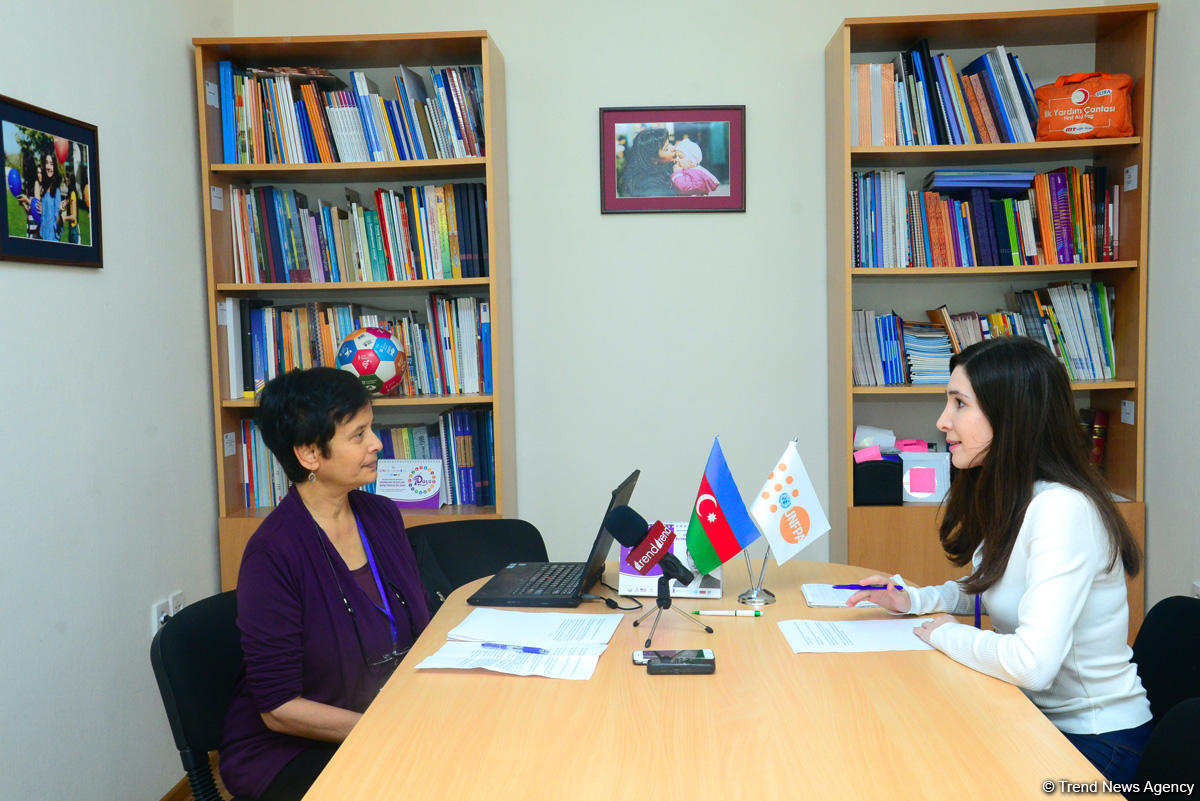Baku, Azerbaijan, Oct.19
By Leman Zeynalova – Trend:
The National Action Plan (NAP) for Azerbaijan on Prevention of and Response to sex selection abortions will help to ensure gender equality in the country, Research Professor at the Maryland Population Research Center (US) Ms. Monica Das Gupta said in an interview with Trend.
On October 19th Baku hosted a conference dedicated to public discussions of the draft National Action Plan (NAP) on Prevention of and Response to sex selection abortions. The NAP has been developed by the team of experts including Ms. Monica Das Gupta, international expert invited by UNFPA, in close partnership with the Government stakeholders.
“It is really important to have an Action Plan, because that way you can have a road map for action and intervention to address the gender problems. With this kind of a road map you have a coherent set of policies that you can pursue and take some sustainable efforts for achieving more balanced sex ratio,” she said.
Ms. Das Gupta pointed out that the National Action Plan has a set of different recommendations and action points on what needs to be done through data and research, communication and advocacy, laws and policies as well as different social protection interventions.
“These measures are complementary and expected to reinforce each other. Of course, ensuring gender equality and promoting the value of girls and women is at the core of all these initiatives. The effectiveness of these measures will depend on the resources and the institutional capacities,” she said.
Ms. Das Gupta noted that this Action Plan will be for 2019-2022.
Further, speaking about the root causes of gender problems in the South Caucasus countries in general, the expert said that the major problems occurred during the transition period following the collapse of the USSR.
“While the South Caucasus countries were a part of the USSR, they all had normal sex ratio at birth. With the break-up of the USSR, the sex ratio at birth went up very sharply in this region. This indicates that the important factor was the disruption between the soviet period and the economic, political infrastructure fell apart immediately afterwards. Jobs, pensions, free schools, free medical care – all things of this kind just disappeared over the short period of time. The quick shift to the market economy that these countries knew nothing about was going to take place. The vulnerability that people faced being put into the situation overnight, put pressure on them to find the traditional ways of coping and some of them chose migration to find jobs and remittances. Some of them had sons, because sons would grow up and protect them and find some way of living,” she said.
Regarding the problems that can emerge as a result of the skewed sex ratio, Ms. Das Gupta said the most obvious one is that there will be a shortage of women for men to marry.
“If you have 13 percent more boys born, then you are going to have 13 percent fewer brides available. So that leads to major problems, which we see already in China. Such issues include trafficking of women, child marriages, etc.,” she said.
Ms. Das Gupta went on to add that perhaps for Azerbaijan, the most important challenge will be associated with the population decline.
“Fertility is already very low in Azerbaijan. If you have 13 percent fewer women then you get shortage of the labor force. The future labor force is also an issue,” she noted.
The international expert noted that the South Korea is so far the only country that has managed to solve the problem with the skewed sex ratio.
“Following the war of 1950s, in around 1960 the South Korea had a new president who decided to industrialize the country. The country adopted many gender equality programs. Not necessarily because the new president was interested in gender equality, but because he was interested in economic development. Women were brought into schools, factories to work, they got jobs. Nevertheless, the country had a very high fertility. He decided to have a very strong family planning program, as they found out that people didn’t want to stop having children until they have one or two sons. To discourage that they had mass media campaigns, TV, posters, radio, basically projecting that girls are desirable, a family with two girls is good, a family with one girl is good. There was a massive campaign.” she said.
Ms. Das Gupta pointed out that over time these measures in the South Korea started yielding positive results for gender equality.
“So they started to change some of those laws, including laws for political representation, provide quota for women candidates in elections. They also changed the family law, so that women have more rights to inherit, more rights in the case of divorce, custody over children, women also could be the head of household, now it doesn’t have to be a man. But basically from 1960s and 1970s, the really important thing was related to mass campaigns projecting that girls were valued,” she added.
---
Follow the author on Twitter: @Lyaman_Zeyn









